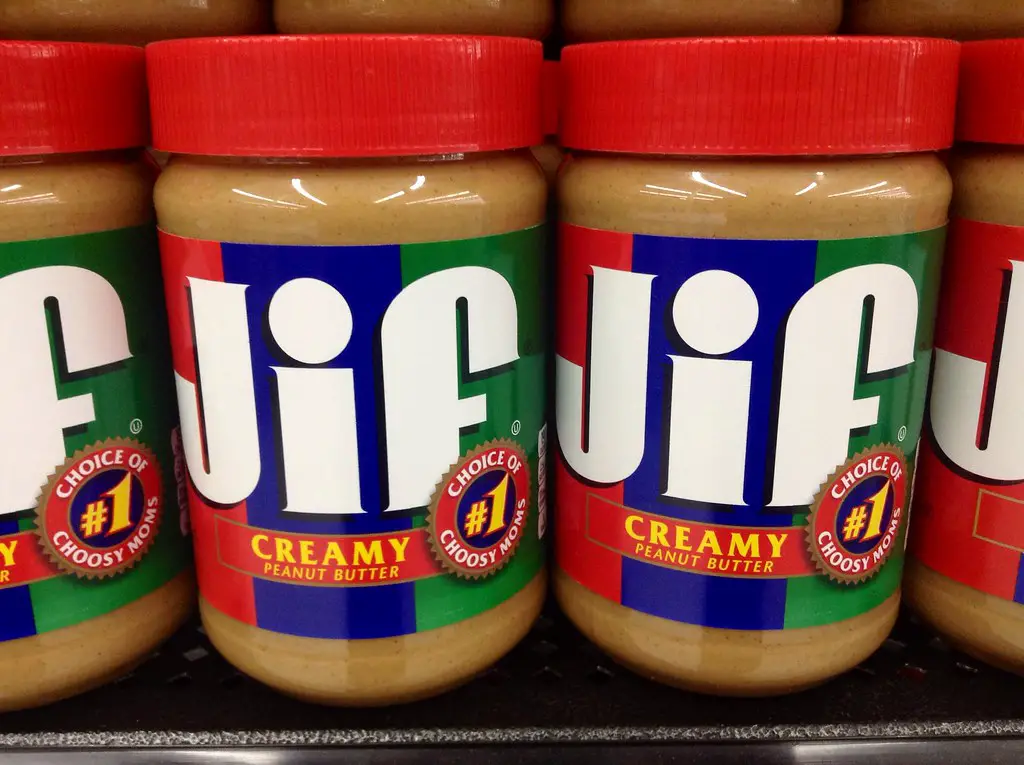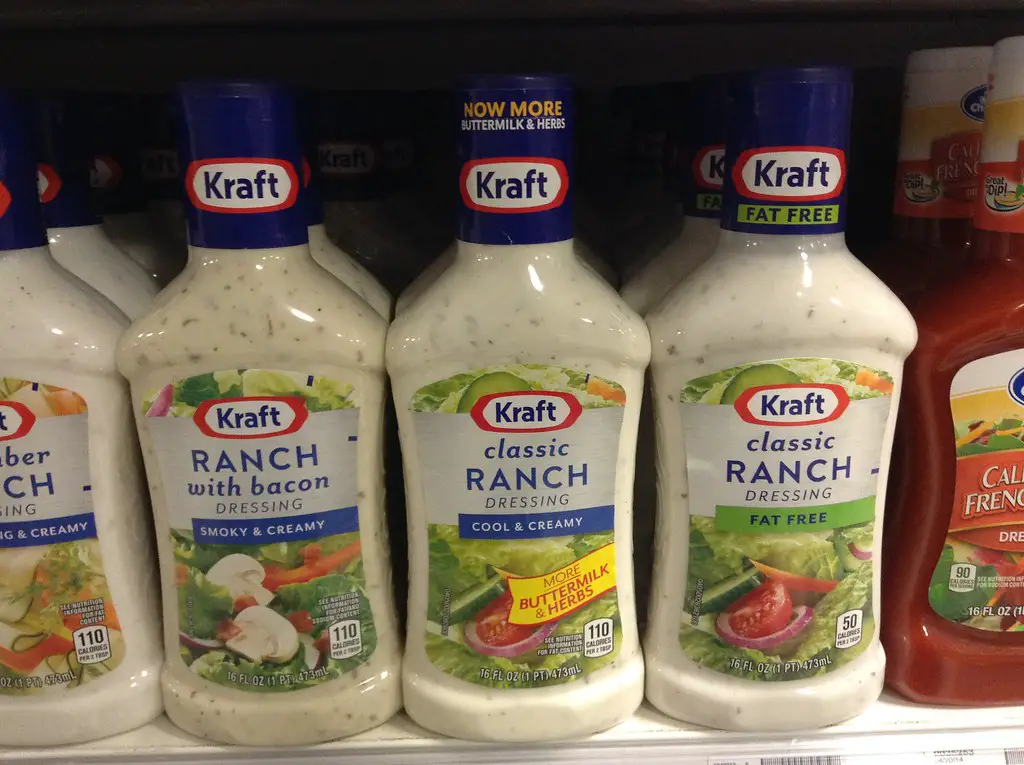Food manufacturers are constantly tweaking their recipes, often without notifying consumers. Whether due to rising ingredient costs, supply chain issues, or evolving health regulations, many popular grocery items have been reformulated in subtle ways. From reducing real ingredients to adding fillers, preservatives, or alternative sweeteners, these changes can affect taste, texture, and even nutritional value. While the packaging and branding may look the same, what’s inside might not be. Here are several common foods that have been quietly altered—sometimes in ways you might not even notice.
1. Orange Juice

Many brands of orange juice have been reformulated in response to rising production costs and lower crop yields. Extreme weather conditions and citrus diseases like citrus greening have devastated orange groves, leading manufacturers to adjust their recipes. Some brands are diluting pure juice with water or blending different citrus fruits to maintain supply while keeping prices steady. Others are incorporating added flavors and sweeteners to make up for the loss of natural sweetness in lower-quality fruit.
Additionally, some companies are turning to juice concentrates and artificial vitamin fortification to create a product that mimics freshly squeezed juice. Consumers may not notice these changes immediately, but the taste and nutritional profile of their favorite orange juice may be subtly different. While the packaging may still claim “100% juice,” the composition has shifted to adapt to industry challenges. Those seeking the most authentic experience should opt for fresh-squeezed or minimally processed varieties.
2. Chocolate Bars

The rich, creamy chocolate bars consumers love have undergone quiet ingredient shifts over the years. Cocoa prices have risen significantly due to supply chain disruptions and climate change, prompting companies to reduce the cocoa content in their products. Some manufacturers are using more milk powder, vegetable oils, or artificial flavorings to compensate for the reduction in cocoa solids. This results in a different texture and taste, even though the packaging may look unchanged.
Sugar levels in chocolate bars have also been adjusted, with some brands opting for artificial sweeteners or alternative sugar sources to meet health-conscious demands. Additionally, emulsifiers and stabilizers are being added to extend shelf life and improve texture without relying as heavily on cocoa butter. These changes often go unnoticed by consumers who are accustomed to their favorite brands. However, those with a keen palate may notice a shift in flavor and mouthfeel over time.
3. Peanut Butter

Peanut butter has traditionally been made with just peanuts and a touch of salt, but modern formulations are becoming more complex. Many brands are now adding stabilizers like palm oil to prevent natural separation and create a smoother consistency. In response to consumer demand for lower-fat options, some versions contain added starches and fillers that alter the texture and nutritional profile. Even sugar levels have been adjusted, with many mainstream brands increasing sweetness to appeal to a broader audience.
Additionally, some peanut butter brands have started incorporating alternative nuts or protein sources due to peanut crop fluctuations. This means that while the product still tastes similar, it may contain less actual peanut content than before. Health-conscious consumers often gravitate toward natural peanut butters with minimal ingredients, but even these can be subject to reformulation. Checking the ingredient list regularly is the best way to ensure you’re getting the product you expect.
4. Breakfast Cereal

Breakfast cereals are one of the most frequently reformulated food products, often without any public announcement. As consumers become more health-conscious, manufacturers have reduced sugar content in many cereals while adding artificial sweeteners or alternative ingredients to maintain flavor. Some brands have swapped whole grains for processed grains to cut costs, impacting the fiber and nutritional quality of the product. Even the texture of certain cereals has changed due to modified starches and alternative binding agents.
Beyond sugar and grains, many cereals now contain added protein or plant-based ingredients to appeal to evolving dietary preferences. However, these adjustments often mean the cereals no longer taste or crunch exactly as they once did. Fortification with vitamins and minerals has also increased, sometimes masking a decline in natural nutrient content. Consumers who have been eating the same cereal for years may notice subtle changes but may not realize the extent of reformulation that has taken place.
5. Cheese

Cheese is a staple in many households, but what’s inside the package may not be what it once was. Many processed cheese products, including sliced and shredded varieties, have been reformulated to include more stabilizers, fillers, and oils. Some brands use starches and gums to create the same creamy texture while reducing the amount of actual dairy. This shift helps manufacturers cut costs and extend shelf life, but it alters the way cheese melts and tastes.
Natural cheeses have also undergone quiet ingredient changes, particularly in response to dairy price fluctuations. Some cheeses now contain lower-fat formulas or artificial aging agents that speed up production. Additionally, salt content has been adjusted in many products to meet new health guidelines, which can slightly impact flavor. While these changes may be subtle, cheese enthusiasts may notice differences in texture and taste when compared to traditional recipes.
6. Ice Cream

Ice cream used to be a simple mix of cream, sugar, and natural flavors, but many brands have moved toward cheaper, reformulated recipes. To cut costs, some manufacturers have replaced cream with vegetable oils, resulting in a different mouthfeel and a less creamy consistency. Others have introduced stabilizers and emulsifiers to improve texture and prevent ice crystals from forming, but these additives subtly alter the way ice cream melts.
Additionally, sugar content has been modified in many ice cream products, with artificial sweeteners or alternative sugars replacing traditional cane sugar. Some “premium” brands have even reduced the amount of real dairy in their recipes while still marketing their products as rich and indulgent. These changes often go unnoticed unless consumers carefully read the ingredient lists. However, those who pay close attention to taste and texture may detect differences in their favorite frozen treats.
7. Yogurt

Yogurt has undergone significant reformulation in recent years, primarily to align with shifting health trends. Many brands have reduced sugar content to meet consumer demand for lower-calorie options, replacing it with artificial sweeteners or fruit concentrates. This can create a slightly different aftertaste, especially in flavored yogurts that were once packed with sugar. Additionally, some companies have changed the type of cultures they use to increase probiotic content, which may subtly alter texture and taste.
Another major change is the reduction of real dairy in certain yogurt brands. Some products now contain added starches, gums, or plant-based proteins to mimic the thickness of traditional yogurt. Greek yogurt, in particular, has seen variations in formulation, with some brands using thickening agents instead of traditional straining methods. While these changes are often subtle, longtime yogurt lovers may notice differences in consistency and flavor over time.
8. Bottled Salad Dressing

Bottled salad dressings have been quietly reformulated to reduce costs and meet evolving dietary preferences. Many brands have swapped out traditional oils, such as olive or soybean oil, for cheaper alternatives like canola or sunflower oil. This switch can slightly alter the flavor profile, making dressings taste less rich or slightly more bitter. Additionally, sugar content has been adjusted in response to health trends, with some dressings now using artificial sweeteners instead.
Preservatives and stabilizers have also been modified, affecting the way dressings mix and cling to salad greens. Some formulas now contain thickening agents that make the texture feel different, even if the label remains unchanged. The rise of plant-based diets has also led to dairy-free variations that use emulsifiers instead of traditional ingredients like buttermilk. While these changes may seem minor, they can subtly impact both taste and consistency.
9. Canned Soup

Canned soup has been a pantry staple for generations, but its ingredients have been quietly adjusted over time. Many brands have reduced the amount of real meat and vegetables in their recipes, replacing them with textured vegetable proteins, starches, or artificial flavors. This change helps manufacturers cut costs while maintaining the same hearty appearance. Additionally, sodium levels have been modified to align with modern health guidelines, leading some soups to taste slightly different than their original versions.
Another common reformulation is the use of alternative thickeners, such as cornstarch or modified food starch, to create the same creamy texture with fewer natural ingredients. Some soups that once contained dairy now use plant-based alternatives or emulsifiers to achieve a similar mouthfeel. Consumers may also notice a shift in seasoning blends, as companies experiment with different spice combinations to enhance lower-sodium versions. While the packaging and branding often remain the same, the subtle changes inside the can can make a big difference to long-time fans of these comfort foods.
10. Bread

Bread is one of the most frequently reformulated grocery items, often without much public awareness. Many commercial loaves have been altered to extend shelf life by incorporating preservatives and mold inhibitors. At the same time, manufacturers have reduced the use of traditional ingredients like whole wheat flour in favor of refined flours and dough conditioners that produce a softer texture. Some brands have even adjusted sugar and salt levels to comply with changing health regulations, subtly impacting flavor.
Additionally, many mass-produced breads now contain added plant-based proteins, emulsifiers, and alternative fibers to appeal to health-conscious consumers. Gluten-free and low-carb options have also led to ingredient shifts, with some brands relying more on nut flours, starches, and xanthan gum to replicate the texture of traditional bread. While these adjustments may not be immediately obvious, longtime buyers may notice that their favorite loaf has a slightly different taste, texture, or density.
11. Mayonnaise

Mayonnaise has undergone quiet reformulation over the years, often to reduce costs or cater to evolving dietary preferences. Many mainstream brands have reduced the amount of egg yolk in their recipes, replacing it with cheaper emulsifiers like soy lecithin or modified food starch. This shift allows for a longer shelf life and a more uniform texture but can subtly alter the richness of the product. Some companies have also switched from traditional oils, such as soybean or canola oil, to blends that incorporate palm oil or sunflower oil.
Additionally, sugar content has been adjusted in some varieties, particularly in low-fat or “light” versions that rely on sweeteners to maintain flavor balance. Vinegar blends have also changed in response to cost fluctuations, leading to variations in acidity levels between different batches. While these changes may not seem drastic, they can slightly affect the taste and consistency of mayonnaise-based dishes. Savvy consumers who have used the same brand for years may notice a difference, even if they can’t pinpoint exactly what has changed.
12. Pasta Sauce

Jarred pasta sauces have been subtly reformulated in response to ingredient shortages and shifting consumer preferences. Many brands have reduced the amount of real tomatoes in their recipes, compensating with tomato paste, concentrates, or thickening agents. This alteration helps manufacturers maintain supply despite fluctuating tomato harvests but can affect the sauce’s depth of flavor. Some brands have also increased the use of sugar, artificial sweeteners, or alternative acids to balance the taste.
Additionally, oil content has been adjusted in many sauces, with some brands reducing olive oil in favor of cheaper vegetable oils. The rise of plant-based diets has also led some companies to remove dairy ingredients from their creamy sauces, replacing them with starches or nut-based substitutes. These changes often go unnoticed at first but can affect the way the sauce clings to pasta or tastes when heated. Checking ingredient labels is the best way to track subtle differences in your favorite sauces over time.
13. Frozen Pizza

Frozen pizza has been reformulated multiple times to meet cost demands and consumer trends, but the changes are rarely advertised. Many brands have reduced the amount of real cheese in their products, using cheese blends that contain fillers, oils, or starches. This adjustment helps keep costs down but can change the way the cheese melts and tastes. The dough recipes have also been altered, with some brands using more refined flours or preservatives to extend shelf life.
Additionally, meat toppings have been reformulated to include more fillers or alternative protein sources, making them less authentic than fresh pizza options. Sauce recipes have also seen shifts, with some brands using concentrated tomato bases instead of whole tomatoes. Even the seasoning profiles of many frozen pizzas have changed to mask ingredient modifications. While frozen pizzas still look the same on the outside, small adjustments over time can lead to noticeable differences in flavor and texture for loyal consumers.
